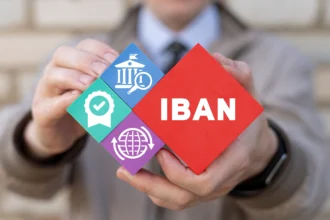Let’s get something out of the way: the phrase “back-end-first web design” sounds like the title of a book no one asked for. But hear me out — what if I told you that some of the fastest, smoothest, most scalable websites built today are still the ones that start not with a color palette or Figma file, but with well-structured databases and an architecture diagram that looks like a subway map?
I’ve been in this game long enough to remember when developers used Firebug to debug JavaScript and designers were still debating the merits of skeuomorphism. That’s around the same time we started Above Bits (or AB for short), long before Charlotte’s startup culture took off and before UX became a Buzzfeed word. And here’s what we’ve found after nearly two decades: websites that load like a dream don’t start with a homepage mockup — they start behind the curtain.
That’s the back end. The underdog of web design. The part of the iceberg under the surface. And as odd as it may sound in 2025, designing from the back end forward is not just alive — it might be more critical than ever.
Why Most Beautiful Websites Still Fail Miserably
Every designer today talks about “user-first” design. It’s the new gospel — intuitive navigation, sexy animations, scroll-triggered videos, and buttons that glow with moral clarity. But let’s face it: a staggering number of sites that look like a million bucks feel like a clunky treadmill when you actually use them.
According to a 2024 global web performance report by Google’s Web Vitals team, more than 53% of mobile users abandon a site if it takes more than 3 seconds to load. That’s right — three seconds. And this isn’t just some lazy thumb scroll in Berlin or Bangkok. This includes your audience in Charlotte, North Carolina, too.
Now consider this: most design studios start with the visuals. They layer beauty onto content management systems, install 47 plugins, grab a ready-made theme, toss in some sliders and popups, and then pray the whole thing doesn’t crash when someone filters products by color.
That’s where back-end-first design comes in. It doesn’t just look nice. It feels fast. It is fast. It doesn’t rely on gimmicks or high-priced page builders. Instead, it’s rooted in planning data flow, caching strategies, and yes, actual server logic.
And here’s where web design in Charlotte takes a different turn.
The Charlotte Way (With a Quiet Hat Tip to Unix)
In Charlotte, we’ve noticed a strange paradox. Local businesses want cutting-edge websites, but they also want things to “just work.” They don’t need a site that wins a CSS Design Award. They need a website that loads quickly on a slow AT&T connection during rush hour.
This is where AB — our Charlotte-based company — still holds to old-school principles. We often begin projects by asking questions like:
How often does your data need to be updated?
Are we expecting bursts of traffic?
Do we really need to query the database every time someone hits that filter button?
It’s the kind of thinking that shaped Linux and UNIX — do one thing, and do it well. Don’t over-engineer. Don’t let your front-end design dictate your back-end limitations. And never, ever trust a plugin to do your server’s job.
In our world, web design in Charlotte doesn’t mean “just throw Bootstrap at it.” It means understanding how Charlotte’s market behaves — what kinds of businesses are popular, which industries rely on local hosting, and which ones need aggressive caching or object storage setups.
From North Carolina to the Netherlands: Why Site Speed Is a Global Crisis
Here’s a fun global fact for you: In 2023, the Netherlands passed a digital access law that fined companies whose public websites didn’t load within a “reasonable time.” Guess how they define that? Under 1.5 seconds on a 3G mobile connection.
Now, look at your average business website in North Carolina. Built on overloaded shared hosting, bloated with unnecessary JavaScript, and loading fonts from six different CDNs — you’re lucky if it responds in under five seconds, let alone one and a half.
Yet most companies don’t even know they’re losing customers daily due to sluggish back ends.
This isn’t a small problem. Shopify’s engineering blog recently revealed that even a 100ms delay in load time can result in a 7% drop in conversion rate. Amazon’s internal studies echo this. Speed kills — but the lack of it kills businesses.
That’s why we remain committed to efficient back-end practices at Above Bits. And that’s why, if you’re taking [web design in Charlotte] seriously, you better be looking beyond the pixels.
The Rise (and Misuse) of No-Code Back Ends
Look, I love modern tools. Bubble, Webflow, Wix, Squarespace — they’ve opened doors for thousands of small business owners and solo founders. But they’ve also introduced a world of trouble when people try to scale.
Here’s a client story I’ll never forget: a startup founder in Charlotte came to us with a beautiful-looking site built entirely in Webflow. It had everything — animations, transitions, and even parallax scrolling. But behind the curtain? The CMS was struggling to handle even 500 SKUs, the search was painfully slow, and every feature needed a workaround.
Back-end-first design doesn’t mean anti-tool. It means asking, “What’s going to break first?” before choosing your stack. A back-end-first mindset says: build it to grow, not just to show.
And in Charlotte, where more and more companies are relying on e-commerce and real-time data integration, that mindset isn’t just a luxury — it’s survival.
When Did Design Stop Talking to Development?
One of the most frustrating things we’ve noticed — and trust me, it’s not just a Charlotte thing — is how siloed design and development have become. Designers hand off their Figma file and vanish into Slack. Developers are expected to “make it work” like magicians with CSS, hoping the animations don’t conflict with the actual data load.
But great web design in Charlotte doesn’t happen in a vacuum. It occurs when teams sit together, argue about API calls, discuss lazy loading versus eager loading, and decide where to optimize before the first SVG is exported.
Back-end-first design demands collaboration not just between code and color, but between logic and layout. It’s where performance budgets meet typography decisions. And guess what? Your website visitors feel it — even if they can’t describe it.
The Unsexy Tools That Make Everything Work
While everyone loves to talk about Figma and Framer, let’s show some love for the unsung heroes: Redis, NGINX, PostgreSQL, Node.js worker threads, object-oriented PHP (yes, really), and custom API gateways that serve only what’s needed, when it’s needed.
At AB, we’ve optimized websites in Charlotte using LEMP stacks tuned to the core. We’ve debugged race conditions caused by bloated AJAX requests and helped businesses shift from clunky shared hosting to light, cloud-optimized environments. And it all begins with a simple question: Can we make this faster without making it dumber?
That’s the essence of back-end-first design. It doesn’t fight design — it supports it. It carries it. It makes sure your beautiful front end isn’t hiding a dysfunctional heart.
When the Back End Is the Brand: Why Load Speed Is Your First Impression
There’s this old quote floating around the design world — “Your brand is not what you say it is, it’s what Google says it is.” But in the world of web design, I’d argue it’s even more brutal: your brand is what loads first.
In a world where people bounce faster than you can say “LCP metric,” your website’s speed is the first handshake. And that handshake either says “We’ve got our stuff together” or “Please hold while we scramble to load fourteen unused libraries and a background video of bees.”
Let’s talk complex data. In 2024, a European hosting company ran a test across 1,000 commercial websites and found that those with back-end logic optimized before design achieved a 19% higher average session duration and a 12% lower bounce rate. That’s a huge deal — not because it looks good on analytics reports, but because it translates directly to time spent on site, pages per visit, and — yes — revenue.
For local businesses investing in web design in Charlotte, that’s not fluff. That’s survival math.
A Tale of Two Websites: What We’ve Seen in the Wild
At Above Bits, we’ve worked with companies of all shapes and sizes, as well as various server setups. One memorable project involved two e-commerce clients with nearly identical product catalogs and similar traffic volumes. One was running on an outdated WordPress install with 30 plugins stacked on top of each other like a Jenga tower. The other? A custom Laravel back end paired with a lightweight Vue frontend, crafted with just enough polish, but loads of performance thinking.
Guess which one was clocking under 1.8 seconds consistently, even under peak load? The back-end-first one. Which one required a full re-platform six months later because the admin panel kept crashing? The plugin Frankenstein monster.
It’s a reminder that web design in Charlotte shouldn’t just mean “looks nice on an iPhone.” It should also mean “won’t crash when your Black Friday sale goes live.”
The Global Obsession With Headless CMS
Let’s touch on the cool kid in town: headless CMS. It’s as if everyone woke up and realized that separating content management from frontend rendering was a brilliant idea. Tools like Sanity, Contentful, and even headless WordPress setups are everywhere. They promise freedom, flexibility, and the ability to serve content anywhere — including mobile apps, kiosks, websites, and even fridges (seriously).
But here’s the thing — headless is not a magic wand. It demands real back-end knowledge. It expects you to understand APIs, authentication, CDN behaviors, and rendering pipelines. And if you don’t? Welcome to a nightmare of CORS errors, broken previews, and endless “why is this field not syncing?” Slack threads.
At AB, we’ve seen this play out more than once. Someone builds a headless site without thinking through how the data will be cached, paginated, or scaled — and the beautiful design ends up paired with a fragile delivery system.
If you’re considering headless for web design in Charlotte, please plan the back end first. Know your schema. Build smart endpoints and test edge cases. Or at least hire someone who’s been burned by it before.
The Post-AI Design World Still Needs Architects
Now let’s address the ChatGPT-shaped elephant in the room. Everyone’s talking about AI-driven design — platforms like Wix ADI, Framer AI, and even AI-generated HTML in Figma. It’s fun, fast, and honestly, a little terrifying.
However, what we’ve learned is this: AI may excel at creating mockups or generating placeholder copy, but it doesn’t know what your caching strategy should be. It doesn’t predict traffic spikes. It doesn’t weigh the pros and cons of denormalized database fields. It certainly doesn’t know what matters to your business in Charlotte, North Carolina.
As fun as it is to prompt your way through a wireframe, AI isn’t replacing the role of the architect, the one who plans the plumbing behind the pretty face. That’s what makes great web design in Charlotte stick. And that’s what makes people come back.
Back-End-First Isn’t a Trend. It’s a Survival Strategy.
At this point, I can hear the question: “Isn’t this just overcomplicating things? Can’t I just use a template and call it a day?”
Sure, if you’re building a brochure site that gets 10 hits a week. However, if you’re dealing with user data, transactions, content updates, or any other type of dynamic interaction, you need a strategy. And that strategy begins in the back.
Think of it like building a house. You don’t start with the paint colors. You start with the blueprint, the plumbing, and making sure the roof won’t collapse when it rains. Good back-end planning is that blueprint — invisible, maybe, but absolutely vital.
And here in Charlotte, where tech meets tradition and budgets don’t always match ambition, it’s the smart way to build for the long haul.
So… Why Aren’t More Agencies Doing This?
Honestly? Because it’s harder to sell. It’s easier to show a sexy homepage mockup than a screenshot of a Redis configuration. It’s easier to push a $75 theme than spend time building custom server logic. And let’s be fair, clients usually care more about how things look than how they scale.
But that’s where education comes in. That’s where experience — the kind Above Bits has been collecting since the MySpace era — makes all the difference. We’ve seen fads come and go. We’ve seen platforms rise and crash. We’ve migrated people off obscure content management systems (CMSes) you’ve never heard of. And through it all, one principle has always held:
If your back end is rock solid, your site will be too.
Wrapping It Up (Before Your CDN Times Out)
We’re not saying every site needs a microservices architecture or a load balancer cluster. But if you’re serious about your digital presence — especially in a tech-savvy city like Charlotte — it pays to start at the foundation.
Back-end-first web design isn’t old-fashioned. It’s the invisible engine behind lightning-fast pages, scalable architecture, and a frictionless user experience. And it’s precisely how we’ve been building websites at Above Bits for almost 20 years.
So if you’re in North Carolina and planning your next digital move, start bright. Start from the inside out. Your visitors (and your server) will thank you.


















